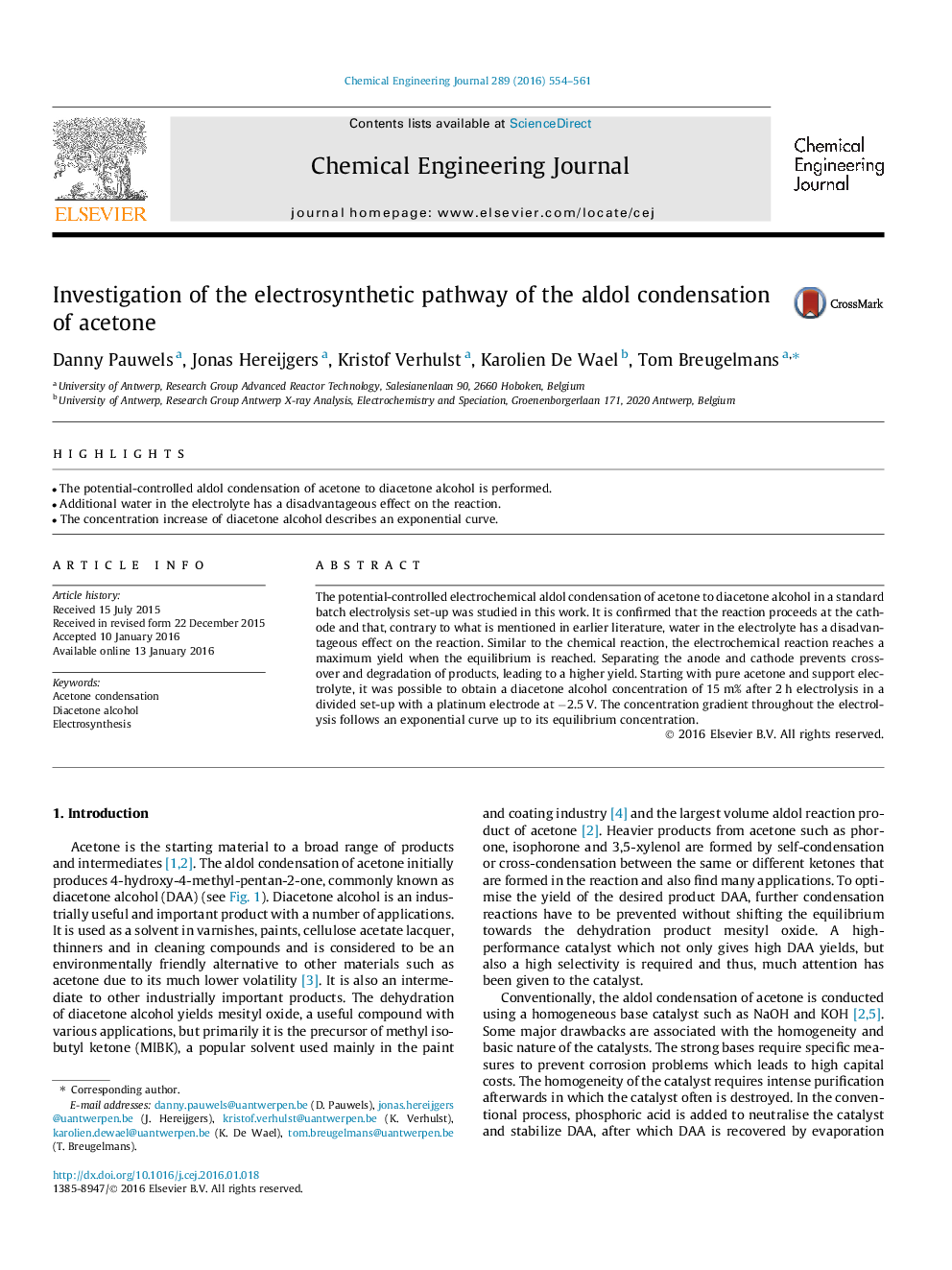| Article ID | Journal | Published Year | Pages | File Type |
|---|---|---|---|---|
| 145842 | Chemical Engineering Journal | 2016 | 8 Pages |
•The potential-controlled aldol condensation of acetone to diacetone alcohol is performed.•Additional water in the electrolyte has a disadvantageous effect on the reaction.•The concentration increase of diacetone alcohol describes an exponential curve.
The potential-controlled electrochemical aldol condensation of acetone to diacetone alcohol in a standard batch electrolysis set-up was studied in this work. It is confirmed that the reaction proceeds at the cathode and that, contrary to what is mentioned in earlier literature, water in the electrolyte has a disadvantageous effect on the reaction. Similar to the chemical reaction, the electrochemical reaction reaches a maximum yield when the equilibrium is reached. Separating the anode and cathode prevents cross-over and degradation of products, leading to a higher yield. Starting with pure acetone and support electrolyte, it was possible to obtain a diacetone alcohol concentration of 15 m% after 2 h electrolysis in a divided set-up with a platinum electrode at −2.5 V. The concentration gradient throughout the electrolysis follows an exponential curve up to its equilibrium concentration.
